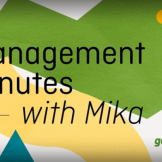Creating a Community of Practice: A Way to Engage Like-minded Practitioners for Learning and Leading
Communities of Practice (CoP) are popping up everywhere in my agency. What seemed to me to be a novel approach to learning, sharing and leading, I have discovered is an aged old phenomenon that stems from learning theory. Cognitive anthropologists Jean Lave and Etienne Wenger coined the term “community of practice” when studying apprenticeships asRead… Read more »










